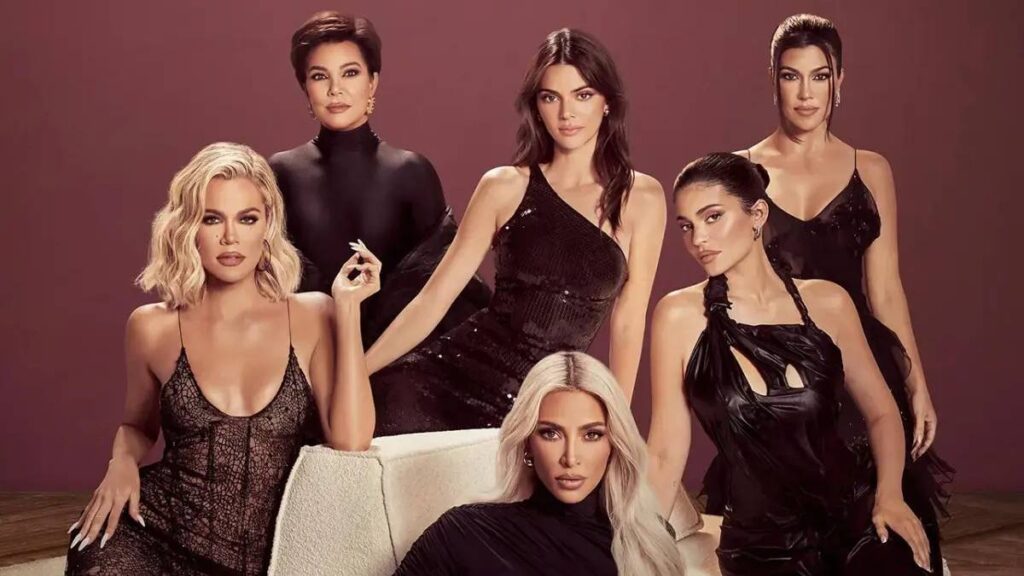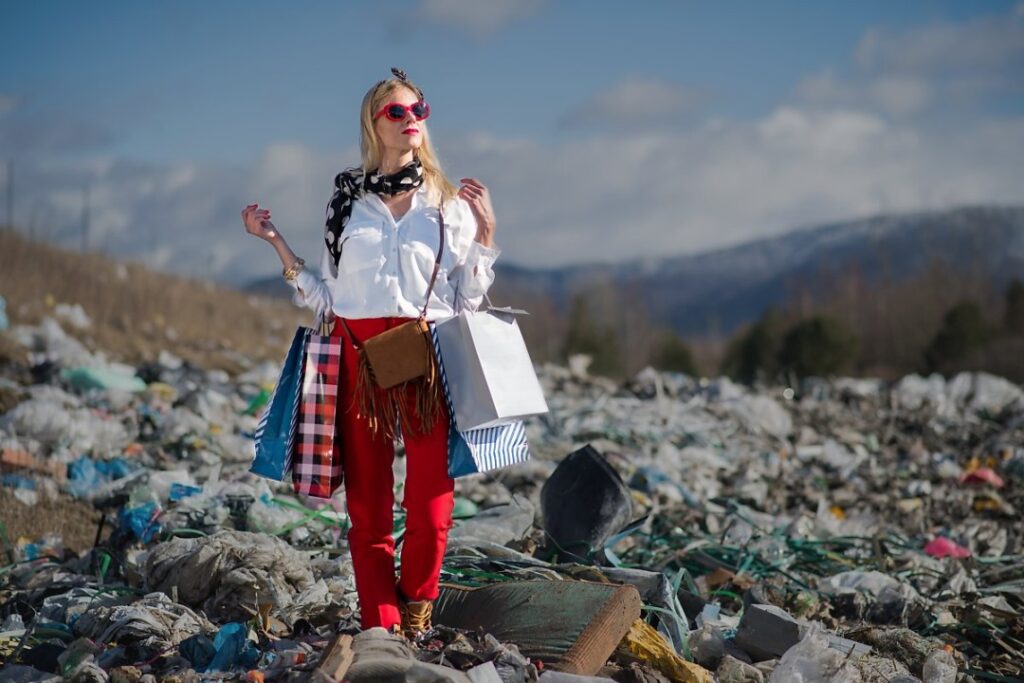
Social media, influencers and the environment are related, even if they seem to be totally separate elements. But let’s take it one step at a time.
For someone born in the 1960s, a world connected to the palm of your hand was unthinkable. Who could imagine being able to interact in real time with people on the other side of the world, seeing them as clearly as if they were right next door? Very few indeed. However, those born after 2000 could not imagine a world without this immediacy of information and connection at the click of a button.
We live in a digital age, that is undeniable. An era full of changes and increasingly intelligent and autonomous technologies, which seek to make our lives easier, but which have a series of disturbing repercussions for humanity. One only has to watch documentaries such as Netflix’s The Social Networking Dilemma to be stunned by the dangers of the use and influence of these platforms. But beyond the social and emotional problems, without downplaying their importance, in this article we will focus on the environmental issues involved.
The new marketing
In this era, the most effective communication is achieved through virtual channels, those that you can see wherever you are, whenever you are. And brands are well aware of this. As a result, there is little left of the goal of sharing and connecting with people anywhere in the world. Today, social media is all about generating revenue.
Thus, the purpose of influencers is to sell. Directly or indirectly they are selling products, services, experiences, brands… How many products have you bought lately because of a video on TikTok? How much money have you spent on products you didn’t even know existed?

Influencer marketing is positioned as one of the main marketing strategies to bring brands closer to consumers. A tactic that leverages the visibility and credibility of this person to connect with their audience and introduce a product. This provides endless benefits to the brand if applied correctly, and of course, to the influencer as well. The payoff is mutual.
Let’s put it this way: a similar way would be the ads that used to appear between TV shows. This advertising space would now be occupied by the social networks, the television would be the device where you watch it, the presenter/salesperson, the influencer and the stage, their page on a certain network. In this way, we can highlight the great evolution of the way to advertise or promote a good.
Therefore, social networks have positioned themselves as an effective means of communication, with a greater impact than that offered by traditional media. With them, brands can advertise to a global audience, interact in real time, speak directly to their target audience, visually show their universe and brand identity, among other things. In this way, they completely change the relationship that brands had with their customers in past decades.
In this way, the key is the emotional connection they generate with users; and influencers are a fundamental part of achieving this.

Famous influencers
Of course, brands aren’t the only ones taking advantage of digital platforms. Social media has catapulted hundreds of people to fame, who can make a comfortable living from the income they generate. So-called influencers or content creators.
We could already see this trend coming since the rise of blogs back in 2000. With the massification of the internet and the democratisation of communication, people began to publish their thoughts, post photos and interact actively, creating communities that shared similar tastes or opinions. After the advent of Facebook, this only intensified. And now, we are witnessing the brutal avalanche of content on this and the other networks that have emerged over time.
Anyone can share posts, but influencers stand out because of their number of followers on these platforms, their carefully curated or focused content in a certain area, and their communicative ability to generate community. Some will have a large team behind them, others will be alone in front of the camera. Some will have started their networks in order to meet people with the same hobby; others with the goal of making themselves known. Whatever the case, the important thing for companies is that follower numbers convert into sales.
Trust and credibility of influencers
This purpose of brands is achieved through efficient campaigns and the characteristics of each of them to achieve trust and credibility among their followers.
There are different articles and studies that try to understand the psychology behind this new form of consumption, because our interaction on networks has a lot to do with the human psyche, with our need to connect with others, with the way we relate to each other, and with the ideas of belonging and community.

In addition, influencers possess different traits that make them attractive to sympathise with their audience. These may be personality traits or desirable traits that cause them to be imitated or admired. Many of them are seen as sources of inspiration or role models, even going so far as to become self-appointed experts and assume a role as opinion leaders. But they can also be seen as peers, as close and accessible figures, as almost friends.
Either way, they are easily identifiable figures and this helps when it comes to positioning a product, creating affiliations and providing closeness. This feeling is important because it generates or reinforces the emotional link between the brand and the consumer. All of this gives us an endorsement or trust when trying a new product, for example. Just as the recommendation of a family member, friend or acquaintance gives the necessary impulse or approval to define your purchase.
A perfect life
In case you haven’t noticed yet, there are a lot of cobwebs being spun in the dark as a result of these seemingly innocent postings. And not all of them are malicious, but they unwittingly perpetuate actions that are harmful to both the planet and ourselves. Chief among them: consumerism.
The perfect life that influencers show on their networks, with frequent travel and huge amounts of make-up and clothes, distorts our perception of reality. They are curated, intense, accelerated, even weaponised versions of what happens in real life, leading to a desire for a life of sameness, materialism and instant gratification. But these are unsustainable practices that basically promote excessive and impulsive consumption.

A situation that worsens when these publications are promoted by fast fashion brands. These brands use their participation, whether paid or unpaid, to expand their presence on social media and attract the interest of potential customers.
The high cost of fast fashion
Because fast fashion brands involve cheap, poor quality manufacturing that breaks down after a single use, generating a vicious cycle of new products and constant purchases. Not only is it produced at a human cost (as the wages of textile workers in some countries are so low that they do not cover basic needs and work is carried out under inhumane conditions) but also at an environmental cost, with synthetic materials that take years to decompose, chemical dyes that pollute water (including groundwater) and overproduction that ends up in landfills or burned.
While fast fashion has facilitated access to cheap clothes and democratised fashion (which many consumers love), the health and environmental risks associated with it are worrying. The almost immediate availability of the latest trends completely changed the way we consume and discard.
With a shortened life cycle, these brands have found in social media an ideal ally to boost the consumption of their products like never before. The content uploaded on these platforms encourages a faster turnover of trends. Products go viral, generate thousands of purchases, and after a couple of weeks they become obsolete. And so on and so forth, creating an unsustainable and damaging consumption habit.
The accelerated nature of the content created by such people is due to the requirement of currency, of not being forgotten. This sense of urgency is a syndrome of the need for novelty, increasingly implanted in our being. So much so that there is even FOMO, the fear of missing out on something, in this case new or trendy products on the market. We want everything instantly; and influencers give it to us on a plate, with direct links to buy the product right away.
So, on the one hand, we have the algorithms that constantly capture our data to provide us with personalised ads that shape our preferences and behaviour. And on the other, we have influencers whose content not only aids data collection, but influences what we consume and how we consume it. Advertising bombards us from all sides to modify our behaviour and even create unconscious habits.
The future of influencers

Social media is not going anywhere. They rule our lives and are gaining more and more ground in it. Their use has become almost automatic, taking hold in those dead times that used to occupy our own minds. So what can we do to minimise their effects on our well-being and the planet?
Let’s start with what is in our hands. Faced with the overwhelming amount of content, it can be hard not to crave that viral product you see everywhere. But, before you press buy, remember all that goes into the purchase of an item. Think about the burning, the landfills, the production process, the exploitation and subhuman conditions, the packaging and shipping. The programmed short shelf life severely aggravates our environmental impact. Today, more is produced than we could consume in our lifetime. As a result, the levels of production, shipping and waste are unsustainable.
If we appreciate the bigger picture and have a sense of the devastating consequences of our actions, it will be easier to manage that unease. Choose carefully and not on impulse. Evaluate our purchases so that they are really useful in our day-to-day lives. Many purchases are things you don’t need, but now want; things that seem practical at the time, but turn out to be unnecessary later. So, before you buy, think about whether it will make sense in your lifestyle, activities and routine.
On the other hand, you can use this influence and reach of the platforms to promote actions in favour of the planet, as well as to give visibility to environmental problems. There are currently two types of influencers who, in a way, share these practices: green influencers, who opt for sustainable products, and disinfluencers, who, as their name suggests, try to disinfluencing you to avoid buying certain products.
However, care must be taken to ensure that sustainability is approached in the right way and does not become just another consumer trend. The point is to change our buying habits, to consume less.
It is also important that communicators are genuinely interested in the issue and consistent in their actions. There is no point in advocating one thing and acting contrary to it. Yes, no one is perfect. But in the role they have taken, their voice and actions carry weight, and they project themselves to thousands of viewers, so they must be careful not to be hypocritical in their discourse. Sooner or later followers will realise whether their affiliation to a cause has been from the heart or mere image-washing; it will tarnish the cause along the way.
Thus, several analyses consider the use of influencers on environmental issues to be complicated. Still, if handled properly, they could play an interesting role in addressing the scepticism and the gap with which sustainability is unfortunately perceived.
You may be interested in: The glamourization of poverty in the fashion industry.





